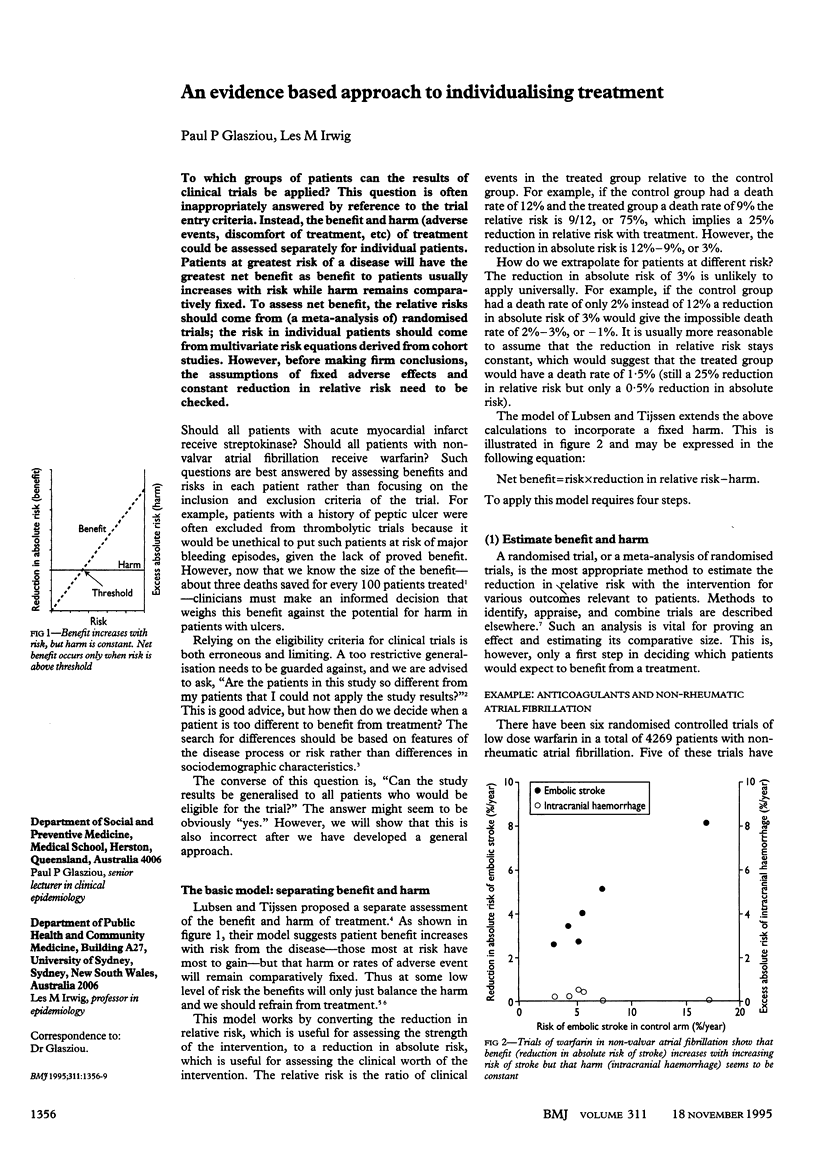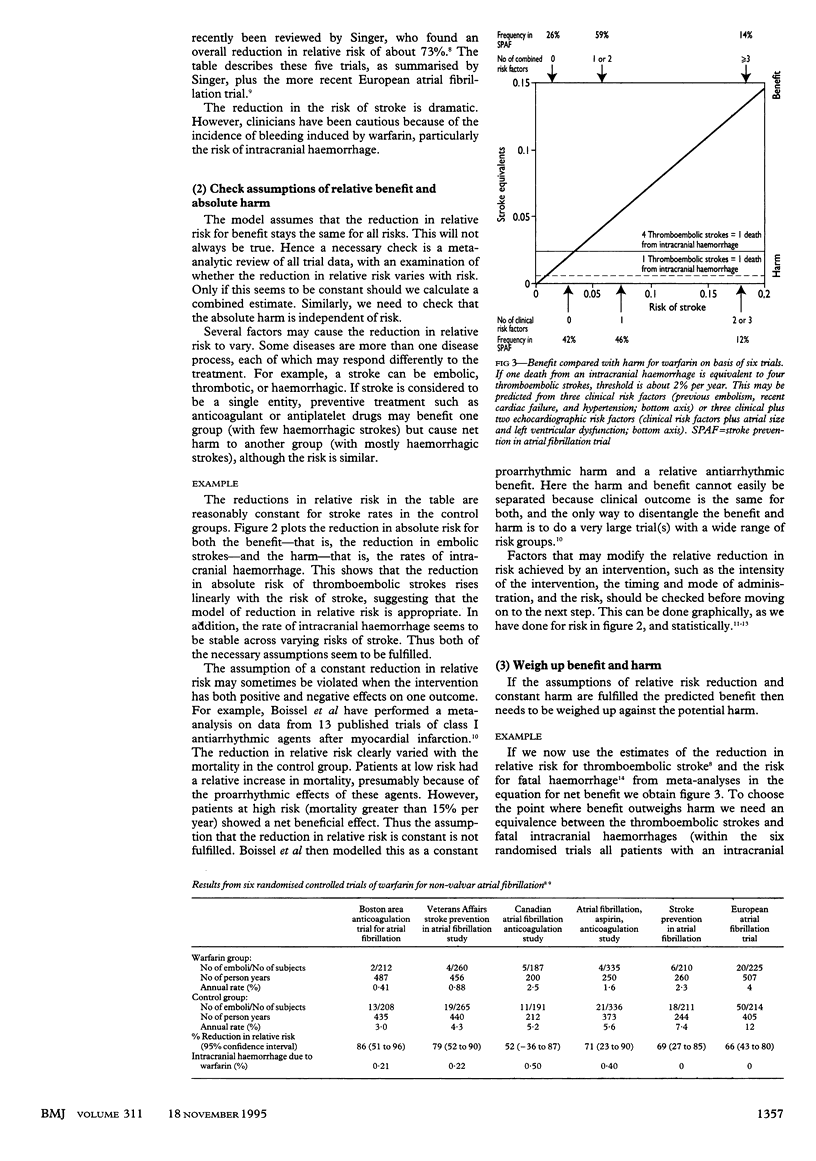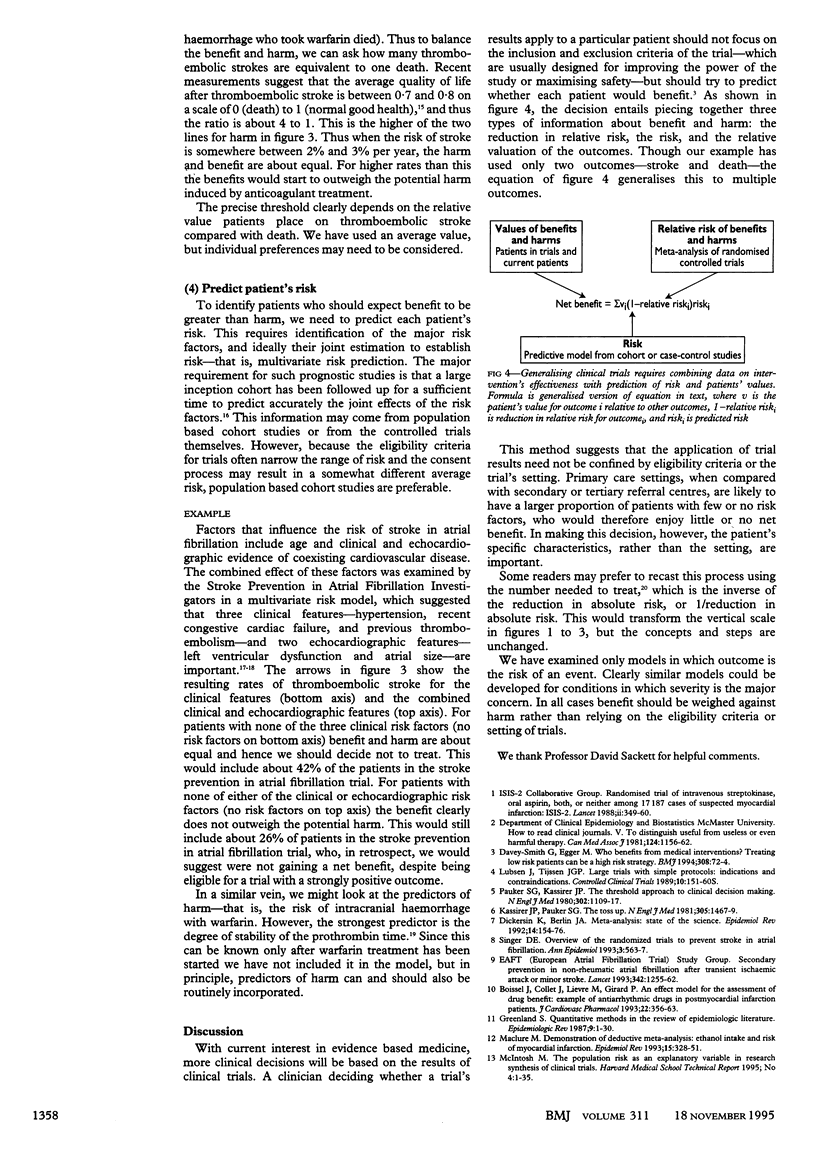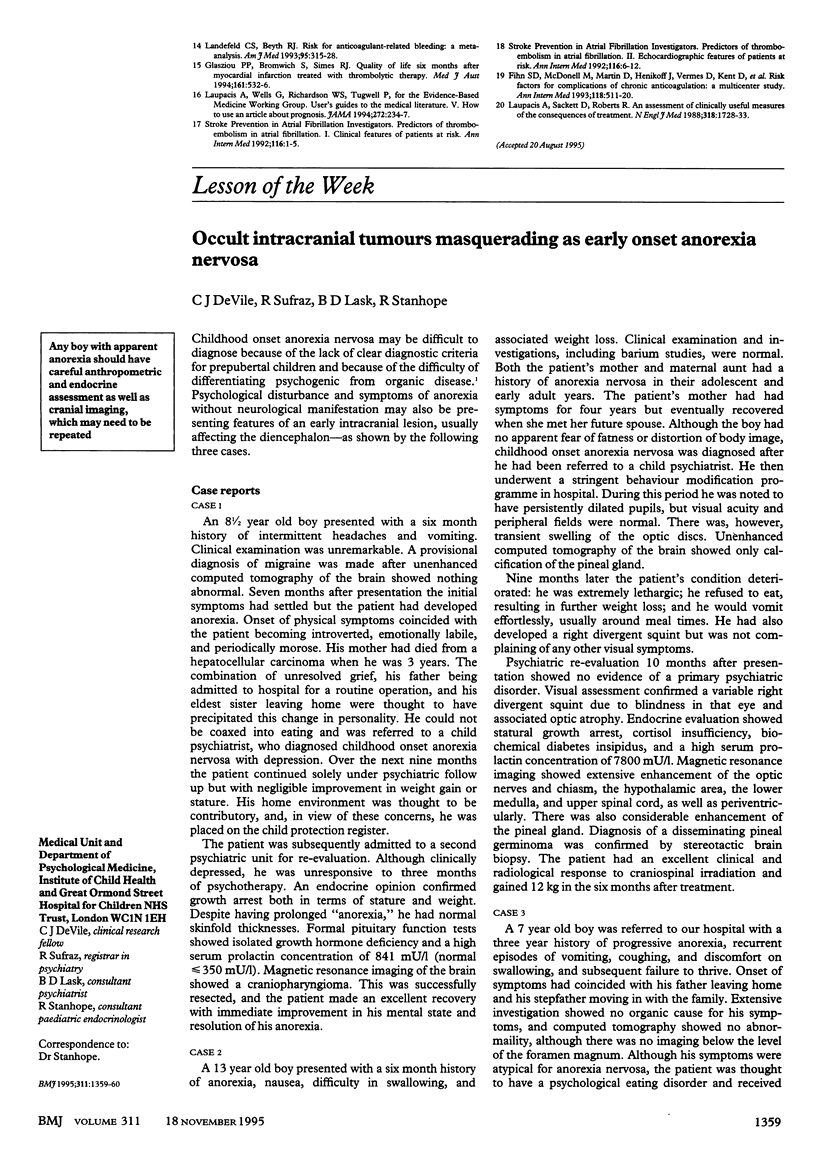Abstract
To which groups of patients can the results of clinical trials be applied? This question is often inappropriately answered by reference to the trial entry criteria. Instead, the benefit and harm (adverse events, discomfort of treatment, etc) of treatment could be assessed separately for individual patients. Patients at greatest risk of a disease will have the greatest net benefit as benefit to patients usually increases with risk while harm remains comparatively fixed. To assess net benefit, the relative risks should come from (a meta-analysis of) randomised trials; the risk in individual patients should come from multivariate risk equations derived from cohort studies. However, before making firm conclusions, the assumptions of fixed adverse effects and constant reduction in relative risk need to be checked.
Full text
PDF



Selected References
These references are in PubMed. This may not be the complete list of references from this article.
- Boissel J. P., Collet J. P., Lievre M., Girard P. An effect model for the assessment of drug benefit: example of antiarrhythmic drugs in postmyocardial infarction patients. J Cardiovasc Pharmacol. 1993 Sep;22(3):356–363. doi: 10.1097/00005344-199309000-00003. [DOI] [PubMed] [Google Scholar]
- Dickersin K., Berlin J. A. Meta-analysis: state-of-the-science. Epidemiol Rev. 1992;14:154–176. doi: 10.1093/oxfordjournals.epirev.a036084. [DOI] [PubMed] [Google Scholar]
- Fihn S. D., McDonell M., Martin D., Henikoff J., Vermes D., Kent D., White R. H. Risk factors for complications of chronic anticoagulation. A multicenter study. Warfarin Optimized Outpatient Follow-up Study Group. Ann Intern Med. 1993 Apr 1;118(7):511–520. doi: 10.7326/0003-4819-118-7-199304010-00005. [DOI] [PubMed] [Google Scholar]
- Glasziou P. P., Bromwich S., Simes R. J. Quality of life six months after myocardial infarction treated with thrombolytic therapy. AUS-TASK Group. Australian arm of International tPA/SK Mortality Trial. Med J Aust. 1994 Nov 7;161(9):532–536. doi: 10.5694/j.1326-5377.1994.tb127596.x. [DOI] [PubMed] [Google Scholar]
- Greenland S. Quantitative methods in the review of epidemiologic literature. Epidemiol Rev. 1987;9:1–30. doi: 10.1093/oxfordjournals.epirev.a036298. [DOI] [PubMed] [Google Scholar]
- Kassirer J. P., Pauker S. G. The toss-up. N Engl J Med. 1981 Dec 10;305(24):1467–1469. doi: 10.1056/NEJM198112103052409. [DOI] [PubMed] [Google Scholar]
- Landefeld C. S., Beyth R. J. Anticoagulant-related bleeding: clinical epidemiology, prediction, and prevention. Am J Med. 1993 Sep;95(3):315–328. doi: 10.1016/0002-9343(93)90285-w. [DOI] [PubMed] [Google Scholar]
- Laupacis A., Sackett D. L., Roberts R. S. An assessment of clinically useful measures of the consequences of treatment. N Engl J Med. 1988 Jun 30;318(26):1728–1733. doi: 10.1056/NEJM198806303182605. [DOI] [PubMed] [Google Scholar]
- Laupacis A., Wells G., Richardson W. S., Tugwell P. Users' guides to the medical literature. V. How to use an article about prognosis. Evidence-Based Medicine Working Group. JAMA. 1994 Jul 20;272(3):234–237. doi: 10.1001/jama.272.3.234. [DOI] [PubMed] [Google Scholar]
- Maclure M. Demonstration of deductive meta-analysis: ethanol intake and risk of myocardial infarction. Epidemiol Rev. 1993;15(2):328–351. doi: 10.1093/oxfordjournals.epirev.a036124. [DOI] [PubMed] [Google Scholar]
- Pauker S. G., Kassirer J. P. The threshold approach to clinical decision making. N Engl J Med. 1980 May 15;302(20):1109–1117. doi: 10.1056/NEJM198005153022003. [DOI] [PubMed] [Google Scholar]
- Singer D. E. Overview of the randomized trials to prevent stroke in atrial fibrillation. Ann Epidemiol. 1993 Sep;3(5):563–567. doi: 10.1016/1047-2797(93)90117-m. [DOI] [PubMed] [Google Scholar]
- Smith G. D., Egger M. Who benefits from medical interventions? BMJ. 1994 Jan 8;308(6921):72–74. doi: 10.1136/bmj.308.6921.72. [DOI] [PMC free article] [PubMed] [Google Scholar]


